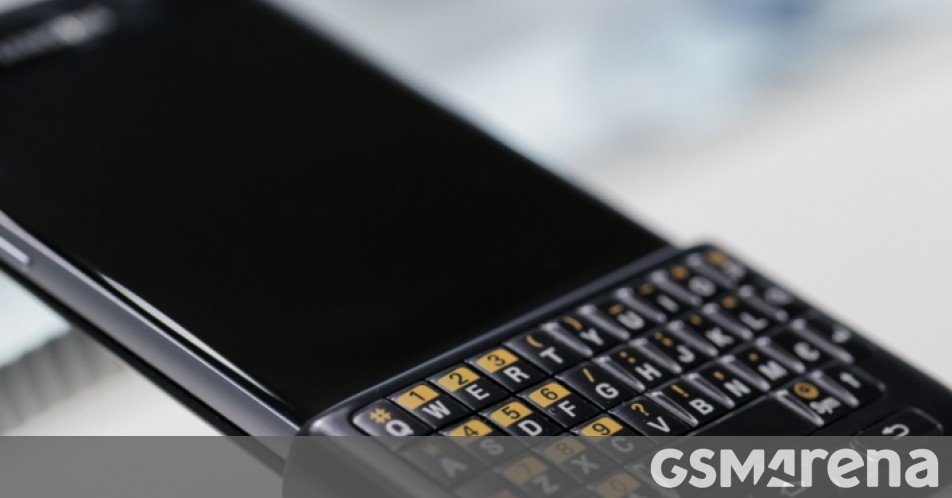Samsung never fell in the “modular phone” trap that companies like Motorola, Google and LG went into. However, the company did experiment with ways to add functionality through cases – things like the Lens Cover that we looked at a few weeks ago.
Now we want to look at a different cover from the same period – the Keyboard Cover for the Samsung Galaxy S6 edge+ and Galaxy Note5 from 2015.

The Keyboard Cover on the Galaxy Note5
This was a detachable QWERTY keyboard (and different layouts) that clipped on the front of the phone. It covered up the lower third of the screen, roughly the part of the screen that’s covered by the on-screen keyboard, and gave you physical keys that let you touch type. This also included the three button navigation that Samsung still defaults to today.
The keyboard was part of a two-piece package with a case that helped protect the back and also keep the keyboard in place. We should note that there was nothing to plug in, no batteries to charge, this just used the capacitive touchscreen underneath to sense keypresses.



The Keyboard Cover on the Galaxy Note5
This may not be as high tech as you imagined, but it made the best out of the multi-touch support. You could, for example, hold down the Alt key to type in digits, without needing a dedicated number row. On-screen keyboards let you long-press to get alternative symbols (e.g. punctuation), this was faster.
When you were done typing, you could unclip the keyboard from the front and clip it on the back. It was also small enough that you could just put it in your pocket too.
Again, this was in 2015. BlackBerry was still around and was preparing to release the BlackBerry Priv, its first Android phone, which had a slide-out QWERTY. The year before it launched the squarish Passport and the more traditional BlackBerry Classic with fixed QWERTYs. Physical keyboards were certainly a dying breed at this point, but have not disappeared completely.




The Keyboard Cover for the Galaxy S7 edge
At the time if you wanted a QWERTY phone, you had a limited range of choices. Plus, makers had to design and build a phone that could (and probably would) fail in the marketplace. The Keyboard Cover was the best of both worlds – you could get one of the best-selling phones of 2015 and there wasn’t much risk for Samsung either. You could pick up the case for $80 and you could pick between black, silver and gold colors.
The thing must have sold well enough (or maybe Samsung was just patient), because in 2016 the Galaxy S7 and S7 edge also launched with keyboard covers.



The Keyboard Cover for the Galaxy S7/S7 edge
The company would persist for another year and in 2017 Samsung brought the Galaxy S8 and S8+ to the MWC with a third-generation Keyboard Cover in tow.



The Galaxy S8 and S8+ also got Keyboard Covers
This was the end of this adventure, however, Samsung never released a Keyboard Cover for the Galaxy S9 generation. That’s still longer than the Lens Cover lasted, which was a one-off.
We still see new projects start up that try and bring back the physical keyboard for smartphones. The most recent example was from CES in January with the Clicks keyboard for the iPhone 14 Pro, 15 Pro and 15 Pro Max.



The Clicks keyboard Cover for iPhones
This is a one-piece case, so taking it off and putting it on is harder. On the plus side, it doesn’t cover up any of the screen (but it makes the phone quite tall). There was no other way to do it, of course, since Samsung could adapt the TouchWiz UI to leave space for the keyboard, but Apple’s iOS is too locked down for such a feat.
What do you think – have on-screen keyboards surpassed physical ones and we will never go back? Or maybe we should go back with accessories like the Keyboard Cover?

